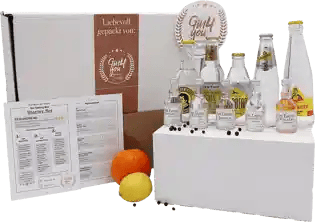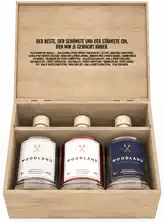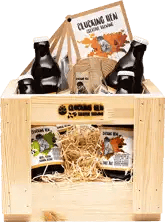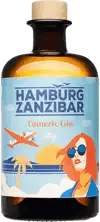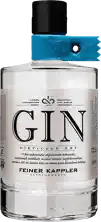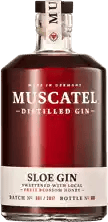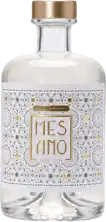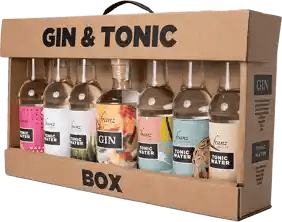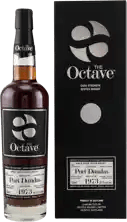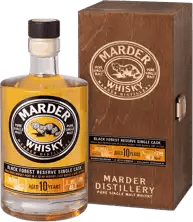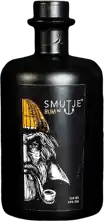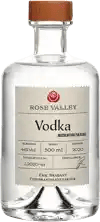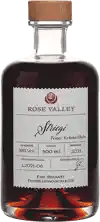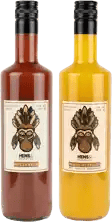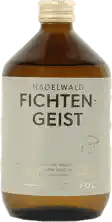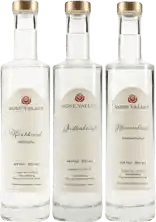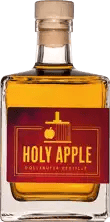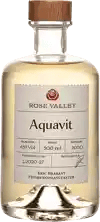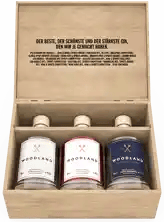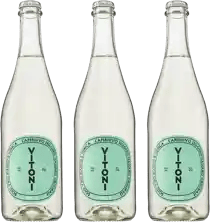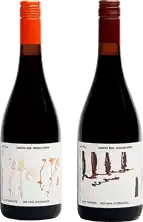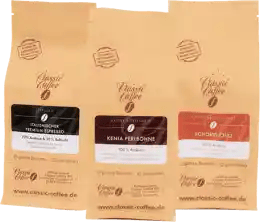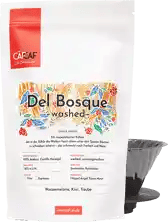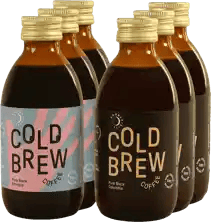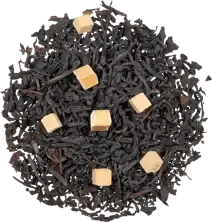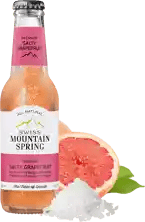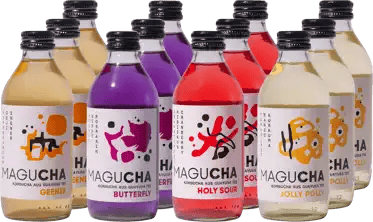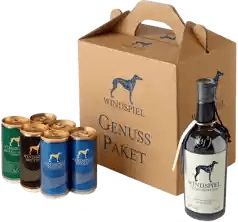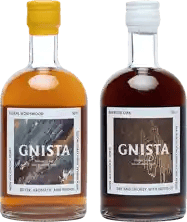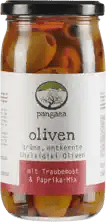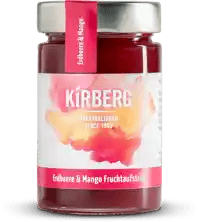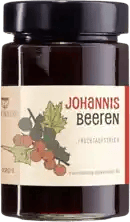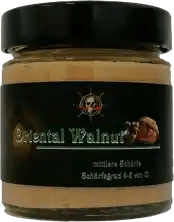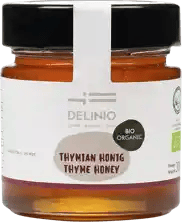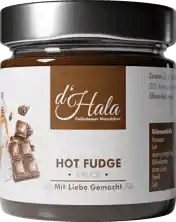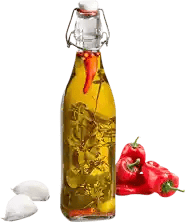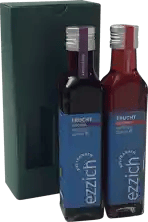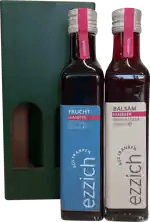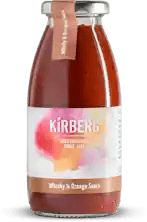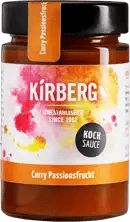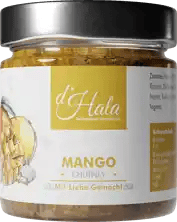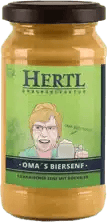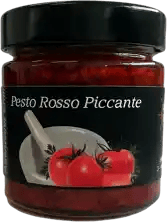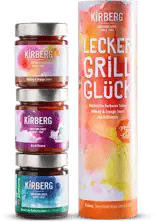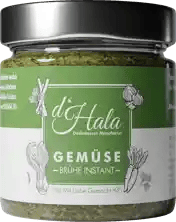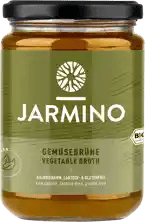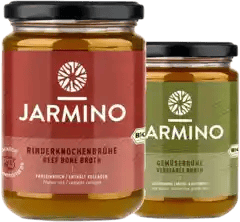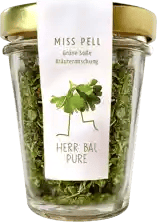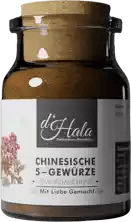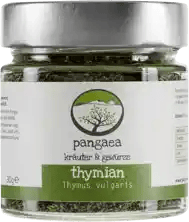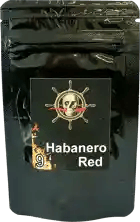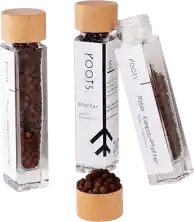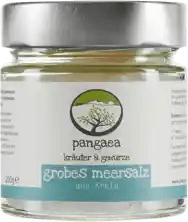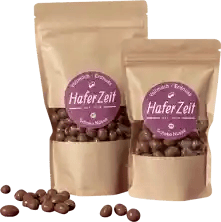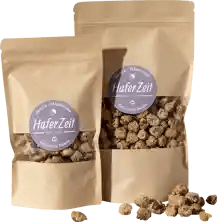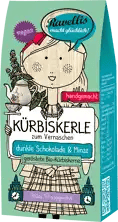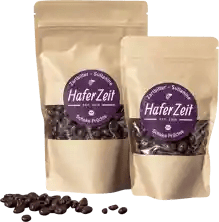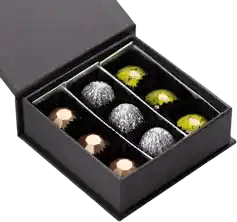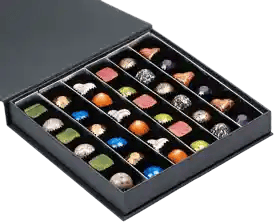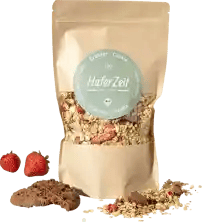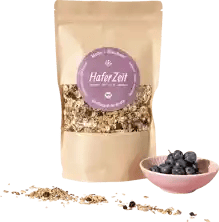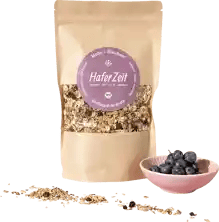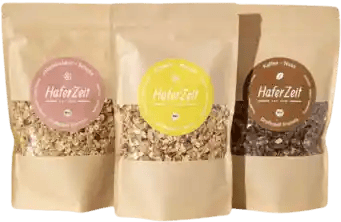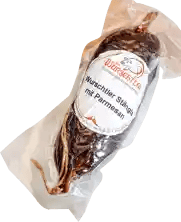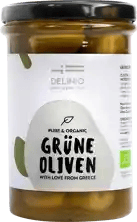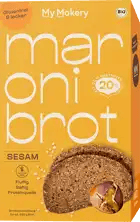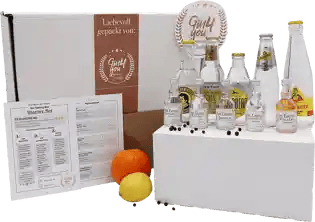Quality instead of quantity!
6,000 independent products
No mainstream
6.000 independent products
Beer
Not many beverages are as old and as well known around the world as beer. For thousands of years, people have been working to improve and refine beer and to create ever new flavors. Almost every adult person has probably drunk it at least once - but not many know about the details of beer.
We'll show you everything you need to know about beer: its origins, its importance in Germany, the many different varieties and numerous interesting facts about liquid gold. Once you've acquired a taste for beer, you can buy your favorite variety right away - or try something completely new!
Table of contents
- 1 What is beer?
- 1.1 What is beer made of?
- 2. beer: history and origin
- 2.1 Who invented beer?
- 2.2 Where does the beer come from, as we drink it today?
- 2.3 Modern beer and its importance
- 3 Beer culture in Germany
- 3.1 Where is which beer drunk?
- 3.2 Beer culture on a small scale
- 4 The brewing process of beer
- 4.1 The brewing process and ingredients
- 4.2 How do the different types of beer result?
- 5. beer types from A to Z
- 6. beer variations
- 6.1 Alcohol-free beer
- 6.2 Gluten-free beer
- 6.3 Organic beer
- 7. buy beer
- 7.1 Buying beer online: the advantages
- 8. beer facts
- 8.1 How many parts per thousand does a beer have?
- 8.2 How many calories does a beer have?
- 8.3 "Who drinks beer, helps agriculture" - origin of the saying.
- 8.4 Who drinks the most beer?
- 8.5 Which hops are most commonly used for beer?
- 8.6 How many breweries still brew beer today?
- 8.7 Why does beer foam when you hit the bottle?
- 8.8 What is the difference between beer and craft beer?
- 8.9 Craft Beer and the Purity Law
- 9 Beer Fun Facts
- 9.1 The strongest beer in the world
- 9.2 The most expensive beer in the world
- 9.3 The beer with the most varieties on tap
- 10. beer at Honest & Rare
What is beer?
Beer is a beverage, and one of the oldest known beverages in the world. The trail of beer can be traced back a good 10,000 years (more on that in a moment). Because of this extensive history, beer brings with it numerous sideshows, making it much more than a mere beverage.
What is beer made of?
At least according to the German Purity Law, a beer always(!) consists only of malt, hops, yeast and water. The exact composition may be varied, but these basic ingredients must not be tampered with. Due to the different production processes, there are nevertheless strong differences in taste (and the alcohol level also varies significantly).
Beer in its traditional form is always alcoholic. This is caused by the fermentation process: Yeast is added to the beer wort (more on this later), which then stimulates malt sugars to be converted into carbon dioxide and alcohol.
Today, by the way, many beers may be sold in stores that do not follow the aforementioned purity law. As long as it is printed on the label what the additives are, it is all legal and fine. Fruits and vegetables as ingredients in beer are therefore no longer a problem. However, this has only been possible since 1987, when the then EC passed this resolution.
Beer: history and origin
Beer in itself is one of the oldest beverages in the world. Its history and origin could easily fill entire books. We will show you here the most important facts about the history of the origin of ancient and modern beer.
Who invented beer?
As is the case with most foods and drinks, we have to go back (very) far in history. About 10,000 years ago, it was the Sumerians (who would now live in Iraq) who probably discovered beer by accident while working with fermented bread dough. Whether the drink was immediately recognized as such there and recorded is not known.
2,000 years later, there were already records, written in cuneiform script, that recorded beer and its production for posterity. So by then at the latest, people knew about the qualities of the drink. Then also began the production of different beers (as well as their export).
Where does the beer we drink today come from?
If we talk about beer as we know it today, we owe the drink mainly to the monks. In the Middle Ages, they began brewing beer in monasteries, which was especially popular during Lent. Nothing was allowed to be eaten there - but it was very much allowed to be drunk. Finally, to ensure that the beer really remained beer, the well-known Purity Law was issued in 1516. Today, the exact anniversary, April 23, is still celebrated as German Beer Day.
Over the centuries, brewing was then transformed by technological advances. For example, bottom-fermented beer, which requires very low temperatures around 10° Celsius, could for a long time only be brewed in cellars and only in winter. Then, when the refrigeration machine was invented - a kind of predecessor to the refrigerator - the brewing process could be stretched throughout the year. This made it possible to offer bottom-fermented beer "out of season" at all.
Modern beer and its importance
Today, beer is of great economic importance in many countries. In Germany, there are around 1,500 breweries producing over 6,000 beers. Around 8 billion euros in sales are generated with the liquid gold every year, and thousands of jobs are kept alive by the beverage. Thus, beers are significant both for ourselves and for Germany in general.
Beer culture in Germany
Around most drinks and foods that are thousands of years old, a real culture forms at some point. You can observe this with wine, for example - but also with beer. Now you can find out what regional differences there are and how important beer is to Germans.
Where is which beer drunk?
In Germany, there are clear differences depending on the region. These are roughly as follows:
- Pilsner has the entire north firmly in its grip. In Lower Saxony, Mecklenburg-Western Pomerania, Schleswig-Holstein and Brandenburg, the Pilsner dominates everything. Differences can be found more in the details - for example, Berliner Weiße, which enjoys a high status in Berlin.
- If we look west to Hesse, North Rhine-Westphalia or Rhineland-Palatinate, the dominance of pilsner beer is interrupted by export beer. The bottom-fermented beverage is very well received in these states. Here, too, small differences can be found depending on the region: the famous Kölsch is the beverage of choice in Cologne, while Düsseldorf's Altbier tastes particularly good.
- In the south, beer enjoyment is strongly influenced by history. Baden-Württemberg and Bavaria love lager beers - due to the numerous monasteries that used to store beer - as well as wheat beer and wheat respectively. Helles is also a typical Bavarian beverage, which is often called Münchner Helles or Bayrisch Hell, depending on the region.
- Schwarzbier is popular in eastern German states such as Saxony and Saxony-Anhalt as well as Thuringia. The bottom-fermented, very dark full-bodied beer can sometimes even taste slightly sweet; the hop flavor is rather less pronounced. Schwarzbier has been brewed in these regions since at least 1390 - and is still drunk today.
So depending on the region, you'll stumble across different beers. This is also true in pubs and bars: If you simply order a beer in Hamburg, you might be served something completely different than in Freiburg.
Beer culture on a small scale
In the previous paragraph, we only mentioned the big, world-famous beers. We didn't take into account the numerous craft beers that are made all over Germany by small breweries and enthusiasts. If you get a chance to try these beers locally, you should definitely do so. Every brewer has a different idea of the "perfect beer". Especially the small suppliers can therefore often surprise you with a taste that is clearly different from Krombacher, Warsteiner & Co.
The brewing process of beer
For several thousand years, the brewing process of beer has been refined more and more. For the following explanation, however, we do not devote ourselves to ancient methods, but only describe how the process works today.
The brewing process and ingredients
In general, there are always grains, hops, water and yeast. Once you have all the ingredients together, the process goes like this:
- We soak the grain in water and get it to germinate. Then we dry the grain and remove the germ, leaving pure malt. This malt is then milled. At this point, the expert does not speak of grinding, but of milling.
- We now mix the finished milled malt with warm water and then heat it. This is called mashing. The starch contained in the malt dissolves and a conversion to sugar takes place.
- Now we take the liquid part - the wort - out of the brew and boil it together with the hops. The brew is then separated from other substances that may still be solid.
- Now only the pitching wort remains: it is brought to the desired temperature for the fermentation process. We then add yeast. The yeast ensures that the aforementioned sugar is converted into alcohol and carbon dioxide. This results in the intoxicating effect of the beer as well as the carbonic acid.
- The fermentation process now takes at least a few weeks, depending on the beer. This duration is necessary so that the yeast can do its work in peace.
If you are interested in learning the art of brewing beer yourself, you will of course (have to) delve much deeper. However, as a rough overview, these five steps will suffice.
How are the different types of beer created?
Since the same four ingredients are always used, laymen are justified in asking where then the different tastes come from. The answer is in the way the different components interact with each other.
- Malt gives the beer its color and determines the subsequent alcohol content, since malt is where the starch comes from, which then becomes the alcohol during the fermentation process.
- The bitter taste is obtained from the hops, and they also have a somewhat preservative effect. The type and handling of hops thus determine the taste of the beer.
- Yeasts are divided into top-fermented and bottom-fermented, fermenting at higher (top-fermented) and lower (bottom-fermented) temperatures. In general, top-fermented beers are more aromatic and full-bodied, but bottom-fermented beers can be stored much better over a long period of time.
- Last but not least, the water can also have an influence on the taste - for example, through hardness levels or salt content.
So the brewing process is one thing. The other comes from the ingredients and how they are processed. Since practically infinite variations can be obtained from these four different components alone, there are theoretically also an infinite number of different types of beer. If we say goodbye to the purity law, which is no problem for some brewers, the variety increases even more.
Beer varieties from A to Z
There are dozens or even hundreds of different types of beer in the world. Common varieties such as pilsner and wheat are just the tip of the iceberg. Some beers are only drunk in certain countries, some are made of rice, others are very clear and light or almost black.
If you want to learn more about the different types of beer in the world, we recommend our extensive overview (link: https://www.honest-rare.de/magazin/alle-biersorten-im-ueberblick). There you will find an overview of most of the known and also less known varieties.
Beer variations
Beer is available in many different varieties. We show you some of the most important ones here.
Alcohol-free beer
Alcohol-free beer actually bears its name unfairly, because residual traces - up to 0.5% are allowed - are still present. However, this is so little that healthy adults do not notice. This beer also consists of hops, malt, yeast and water. However, the fermentation process is interrupted or throttled, the alcohol is filtered afterwards, or special yeast organisms that work "gently" are used.
In any case, this process produces beers that have a very low alcohol content. Some groups of people - such as pregnant women - are nevertheless advised not to drink this beer. In recent years, alcohol-free beer is becoming more and more fashionable: a good 7% of beers on the market are alcohol-free, which is a record.
Gluten-free beer
As the name suggests, gluten-free beer lacks gluten. It is made by using gluten-free grains, which can include millet, buckwheat or quinoa, for example. Barley or wheat, which are often used for "normal" beer, are left out because they contain gluten.
An alternative is to break down the gluten afterwards using suitable enzymes. This works quite well, but residual traces of gluten may still be present. If you have a gluten intolerance, this could already be enough for your stomach and intestines to rebel.
There are several dozen varieties of gluten-free beer on the market. The taste is usually different from normal beer, because other grains are used. If you do not have any intolerance, you can go for the gluten-containing beer. Gluten is not bad per se, but only dangerous if you can't tolerate it.
Organic beer
Organic beer differs from normal beer only in the sense that the ingredients come from ecologically sustainable cultivation. Hops and grains are thus grown and harvested in a way that does not harm people or the planet. Synthetic additives are banned, for example, and fertilizer is also on the red list.
Often, this beverage has a shorter shelf life than regular beer. This is primarily due to the lack of pasteurization. So you have to drink the beer faster, but can enjoy a usually somewhat more intense taste.
Apart from that, the organic beer is identical to the supermarket normal beer. There are no other ingredients in the mixture, instead only the cultivation and harvesting methods differ. Therefore, if you want to drink sustainably, reach for this beer.
Buying beer
When you buy beer, you're limited to what's available locally at the supermarket. You won't find the 6,000 beer varieties already mentioned, which are actually available in Germany, directly on the shelf in any supermarket. In addition, the selection is rather limited, especially in rural areas. Suppliers can't drive to every supermarket - and in small regions with lower beer consumption, the expected turnover is lower. Ergo, larger supermarkets tend to be supplied, but that doesn't help you if you live in a rural region.
If you are in a hurry, there is no way around supermarket beer - but if you have time, the Internet offers you a better alternative.
Buying beer online: the advantages
If you buy beer online, you generally have a larger selection than in the supermarket. This is especially important for connoisseurs who often want to try new varieties. In addition, you can compare prices more easily, so you don't pay a lot of money for beer that is much cheaper elsewhere.
You also know exactly what you'll get and when. You will be given the delivery dates and you will get everything conveniently delivered to your home. Carrying heavy crates of beer in the supermarket isn't that easy? That's right: It's much easier if you just have the bottles delivered to your door.
Beer facts
Beer itself is very interesting. We will now show you some important facts that beer drinkers should definitely know!
How much alcohol does a beer contain?
The alcohol level after drinking beer depends on several factors - including alcohol content, amount of beer or even body weight. At a typical alcohol content of 5% (which is about right for most commercial beers) and drinking exactly one liter of beer, a person weighing 75 kg would have about 0.76 per mille in him. This liter would therefore already be enough for you to no longer be allowed to drive a car (there, the limit at which you can still get away with a fine is 0.5 per mille).
There are therefore too many variables to determine how much alcohol leads to which blood alcohol level. You'd better not overestimate yourself: at 3.0 per mille, the limit for severe alcohol poisoning has already been reached.
How many calories does a beer have?
Beer derives its calories mainly from alcohol - about two-thirds - and from carbohydrates - about one-third. A very small proportion is also attributable to the proteins it contains. Since alcohol contributes so much, the alcohol content thus also determines the calorie content. Strong beers are therefore particularly "fatty," while a wheat beer has fewer calories than low-fat milk, for example (38 kcal versus 48 kcal). However, beer is still "low-fat" compared to red wine, which is normally higher in calories (84 kcal).
You can find some typical beers and their calorie content here:
- Non-alcoholic Hefeweizen is a real weight loss beer, containing no more than 20 kcal.
- A Pale Ale with about 5.6% brings it to a much higher 35 kcal.
- Well-known beers such as a Warsteiner Pils increase the content to 43 kcal.
- A typical Kellerbier with a round 5.0% comes to about 49 kcal.
- Ever had Desperados? The beer is a calorie bomb and brings it to 59 kcal.
As usual, all values refer to the calorie content per 100 ml of liquid. Due to the highly fluctuating values, we advise you to simply look at the label on the bottle if you want to be sure.
By the way, the colloquial beer belly doesn't really come just from drinking beer. Rather, it's a mixture of alcohol, calories, too much food and, most importantly, hormones contained in beer. Getting really "fat" from beer alone is very difficult.
"Whoever drinks beer helps agriculture" - origin of the saying.
The well-known saying can be traced back to the period between the 1960s and 1970s. The well-known exclamation makes sense when you consider that the beverage is made from hops, malt and barley - at least according to the German Purity Law. So if the consumption of these three raw materials is increased, the farmers rejoice and agriculture flourishes. Today, people still like to use the saying to ironically make light of (overly) high beer consumption. In addition, it can still be found on numerous imitation billboards, which often hang on the walls of pubs.
Whether it is generally sensible to call for massive alcohol consumption in order to strengthen a country's economy is, of course, another question...
Who drinks the most beer?
The Czech Republic drinks by far the most beer per capita in the world: each person drinks about 191 liters a year, which is roughly equivalent to one liter of beer every two days. Austria (107 liters) and Germany (101 liters) follow behind.
In absolute quantities, China consumes the most beer: The sheer mass of the population means that a good 39 billion liters are drunk each year. In Germany, the figure is around 8.3 billion liters.
The trend over the years is interesting. Between 1970 and 1990, Germans drank the most beer, around 140 to 150 liters per capita per year. Since then, the curve has been downhill, with slightly less being consumed every year. Mind you, this does not mean that alcohol consumption as a whole is declining: What you don't drink as beer, of course, you can make up for with other beverages.
Which hops are most commonly used for beer?
It is the hops that make a beer bitter and thus provide the typical taste. If you simply omit the hops, beer tastes rather sweet, which is caused by the malt content.
In general, the beer world distinguishes between bitter and aroma hops:
- Bitter hops are preferred overall and used most often. This is how the desired bitter taste is produced quickly and inexpensively. To know how bitter a beer tastes, many craft beer breweries print the "bitter content" in IBU on the bottles. The higher the value, the more bitter the beer theoretically is. However, the addition of other substances can still produce a sweet taste. An Irish Stout, for example, has a very high 60 IBU. However, since it contains caramel malt, this substance significantly reduces the bitterness.
- Aroma hops are the second major category. The bitterness is rather subtle, with fruity, floral and sometimes spicy aromas taking center stage instead. As the name suggests, beers of this type need not taste bitter at all. People who can't do anything with beer are therefore often better off with beer based on aroma hops.
Of course, there is no such thing as the "best hop. What you like is permitted. In the normal trade, however, you will find bitter hops much more frequently: They provide the bitter taste most people want and are much cheaper to buy when producing the beers.
How many breweries still brew beer today?
In 2021, there were just over 1,500 breweries in Germany. The trend over the past years and decades is clearly positive here: in 1995, there were still about 1,250 breweries, so in about 30 years, a good 250 breweries have been added. Since 2019, this trend has been in slight decline, but this is likely to be strongly pandemic-related: small breweries in particular were unable to cope with the economic setbacks and had to close.
In the USA in particular, beer is currently experiencing a renaissance. Around 1980, there were fewer than 100 breweries in the United States, many of them large corporations. With the craft beer movement, there was renewed momentum: Several hundred breweries were added in the 1990s. Since 2010, the number of breweries has multiplied from about 1,500 to more than 5,000 breweries in 2016. Today, there are more breweries in the country than ever before - which is also true of Germany.
Why does beer foam when you hit the bottle?
Everyone knows it: someone is opening a bottle of beer and another person takes their own bottle and "knocks" it. By hitting the head of the bottle, the beer suddenly starts foaming strongly and shoots out of the bottle.
The cause is the difference in pressure: a bottle containing carbon dioxide is under high pressure. If you open the bottle, the pressure is immediately reduced. Carbon dioxide leaves the liquid and dissolves everywhere in the beverage. This creates the familiar gas bubbles. Hitting the bottle causes the glass to vibrate, which causes the bubbles of carbon dioxide to vibrate at the same time and detach from the glass. Foam forms inside the beer, which is followed by more and more bubbles.
As the foam expands its volume, it has to leave the bottle somehow, because it cannot burst the glass - so it shoots out of the neck of the bottle. This works not only with beer, but generally with all carbonated beverages. The decisive factor is that the glass must be set in vibration. Watch out the next time you try it out: This "trick" is not always well received....
What is the difference between beer and craft beer?
The term "craft beer" originated in the USA. There, it was designed to identify "smaller" beers that stand out from the big breweries. There, craft beer is characterized by these definitions, among others:
- A maximum of seven million hectoliters of beer may be produced per year.
- No more than 25% of the brewery may be owned by a well-known large corporation.
- The flavor may only come from the brewing ingredients; flavorings are taboo.
For Germany, this definition would be quite meaningless, as even very large breweries like Bitburger fall below the seven million hectoliters described.
In this country, the focus is therefore more on other properties of beer. An official definition is lacking for the time being. Theoretically, you could dare to brew beer next week and offer your mixture as craft beer. You don't have to follow strict rules.
In Germany, craft beer has therefore become more of a term to indicate beers outside the mainstream. These beers often taste unusual - for example, by adding unusual agents such as cocoa beans - and are brewed in rather small quantities. The goal of craft beer is to rethink old concepts in brewing and bring an equally new spin to beer itself through new ideas.
That's why we can't say "what craft beer tastes like." There are so many flavors that it is impossible to make a meaningful statement. It can taste very tart and bitter - but also very sweet and refreshing.
Craft Beer and the Purity Law
Most of the time, craft beer production follows the purity law - but not always. Adding natural ingredients, for example, is prohibited. This poses problems for brewers if, for example, the aforementioned cocoa beans are to be added. However, this purity law dates back to 1516 and is therefore over 500 years old. Brewers therefore argue that while the Purity Law stands for a certain quality, it is also restrictive.
Whether it bothers you or not if a craft beer is not brewed 100% according to the Reinheitsgebot is something you have to decide for yourself. If it doesn't bother you, there's nothing to stop you from trying unusual craft beer blends.
Beer Fun Facts
Everything you always wanted to know about beer!
The strongest beer in the world
The absolute top position is taken by Snake Venom from Scotland by the Brewmeister brewery. At 67.5%, this beer is far from "normal" beer, of course. Peat malt and two types of yeast are used to achieve the high alcohol content. During fermentation, the brew is then frozen several times. More than 35 milliliters at a time, the manufacturer does not even recommend itself. Supposedly - we haven't tried it yet - Snake Venom still tastes like beer, though.
If you want to stay in Germany, Schorschbock from Schorschbräu in Gunzenhausen is the right alternative. This beer "only" reaches 57%, but that means the drink doesn't have to be imported from abroad. The traditional Eisbock method provides the necessary fuel for the high rotation rate here.
The most expensive beer in the world
The Vieille Bon Sexours Ale from Caulier, a brewery from Belgium, is particularly high-priced. The beer is sold in bottles of 12 liters each, resulting in a price of about 870 euros per bottle. A half liter costs a good 40 euros. The shelf life of this beer is about ten years, and the alcohol content is put at 8%. Unfortunately, you can't buy it online, and you can only drink it in London in some restaurants.
If we want to be very precise, we can also mention a bottle of Löwenbräu Lager for about 11,000 euros. The price was achieved at an auction in 2009, the bottle dates back to 1937, so the beer is no longer drinkable, the price is solely due to its value as a collector's item. Unlike Vieille Bon Sexours Ale, you can't drink this beer, which is why we don't want to give it first place.
The pub with the most beers on tap
If you want to drink your way through this drink menu, you'll probably wake up the next day with the biggest hangover ever: At Releigh Beer Garden in Raleigh, a major city in the U.S. of the same name, you can choose from 369 different beers on tap. This number was verified by the Guinness Book of Records in 2015.
If it doesn't have to be on tap, take a trip to the Délirium Café in Brussels. There you can order several thousand different types of beer. In 2004, the bar made it into the Guinness Book of Records with 2,004 types of beer; in 2014, it had more than 2,400 types of beer. The interim record was 3,162 beers.
Beer at Honest & Rare
Craving exceptional taste that you're guaranteed not to find on the supermarket shelf? At Honest & Rare we offer you numerous different beer varieties. You will find non-alcoholic beer in our assortment as well as different IPAs, lagers and strong beers, beers from Belgium or stout beers according to English tradition.
It is important to us not to offer you off-the-shelf beers, but high-quality drinks - and you are guaranteed to taste this quality with every sip. Look through our assortment at your leisure and don't hesitate to contact our customer service if you have any questions!
Brilliant!

Bitte bestätige deine Anmeldung noch eben - du hast eine Bestätigungsmail von uns. Klicke darin auf den Link. Danach bekommst du deinen Rabattgutschein.

